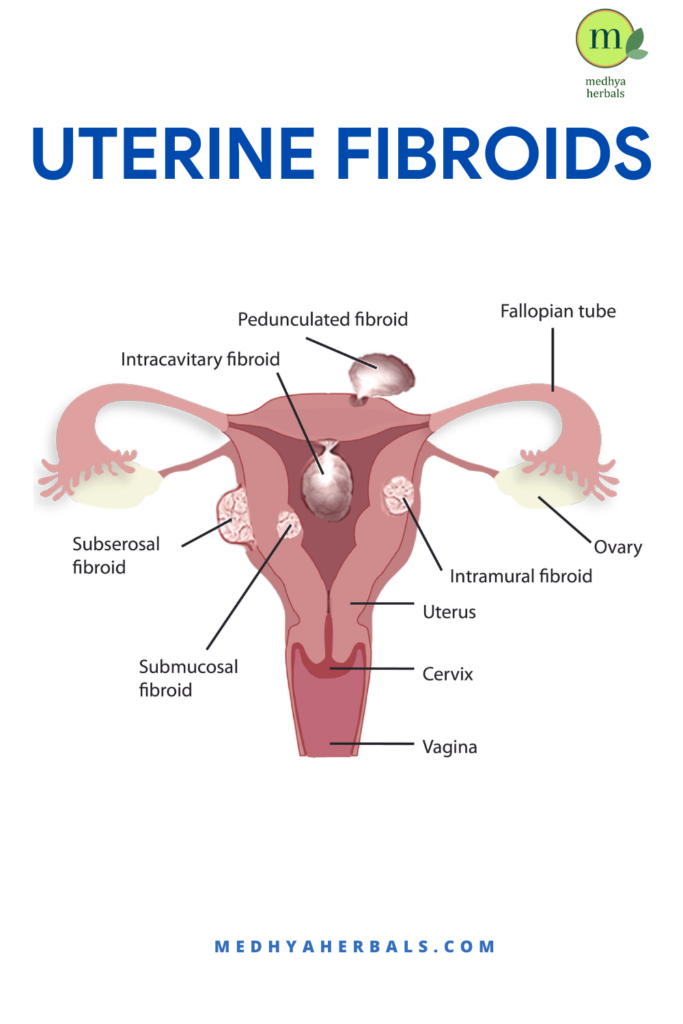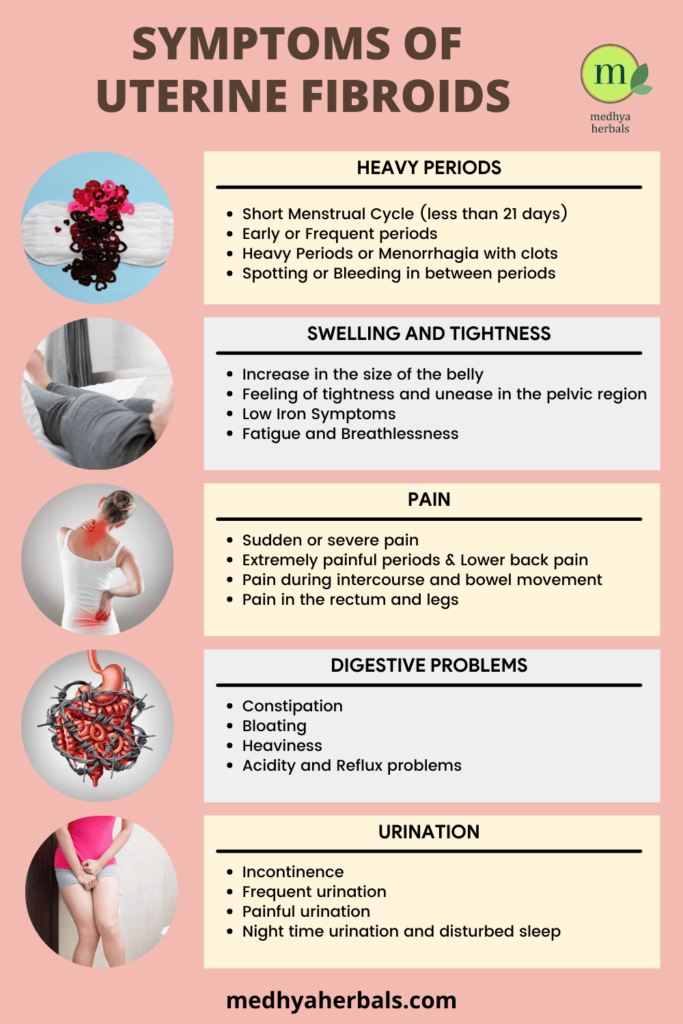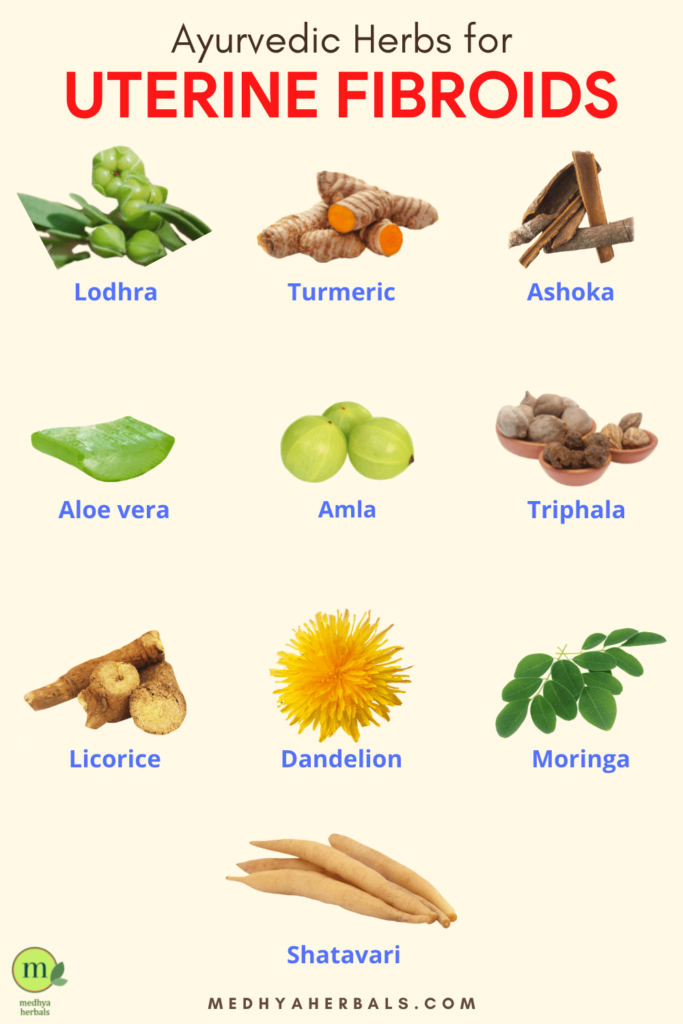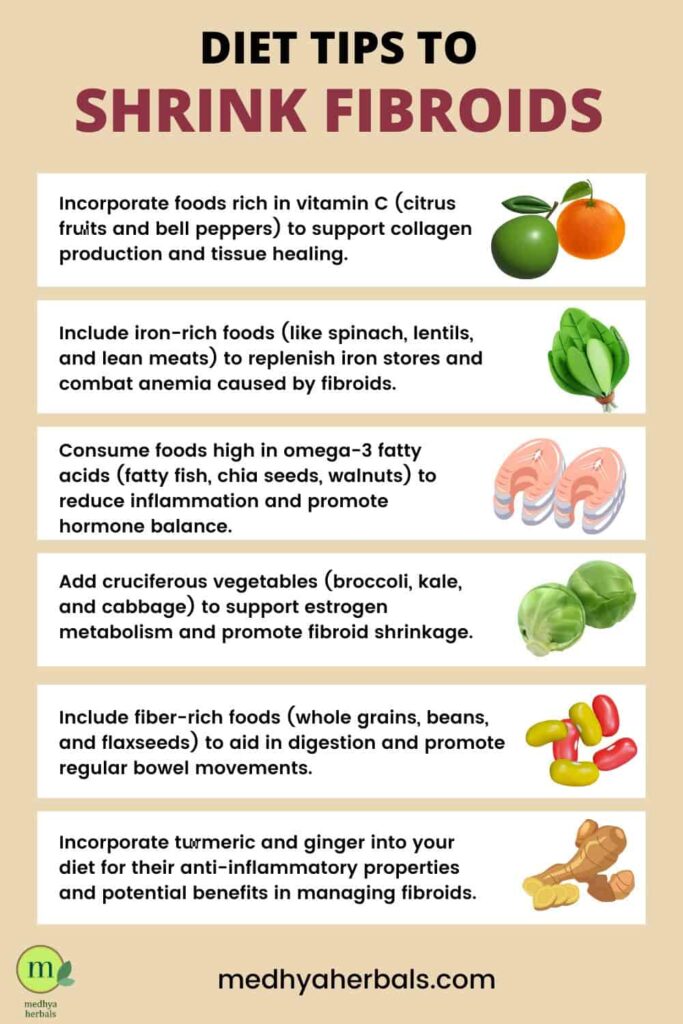Uterine fibroids are non-cancerous growths that develop within the muscular walls of the uterus. They are one of the most common gynecological conditions, affecting many women during their reproductive years. If you have been experiencing heavy and prolonged menstrual bleeding, pelvic pain or pressure, frequent urination, or even reproductive complications, you are not alone in your struggles.
Now, you may be wondering: Can Ayurveda truly provide a cure for uterine fibroids? The answer lies within the depths of ancient Ayurvedic wisdom, which recognizes the intricate interplay of factors contributing to the development of fibroids. By addressing the root causes, Ayurvedic treatment for uterine fibroids offers a holistic approach that not only alleviates symptoms but also aims to restore balance and promote overall well-being.
In this article, I will share my expertise and guide you through a wealth of knowledge surrounding Ayurvedic treatment of uterine fibroids. We will explore the best Ayurvedic treatments, dietary recommendations, lifestyle adjustments, and powerful herbal remedies that have stood the test of time. Together, we will uncover the fastest and most effective ways to naturally shrink and heal fibroids, ensuring that you regain control of your health and live a life free from the burdens of this condition. Let’s begin!
What are Uterine Fibroids?
Uterine Fibroids, also known as uterine leiomyoma, leiomyomata, or simply myoma are benign tumors that develop in the muscular wall of the uterus. Fibroids can vary in size, ranging from tiny seedlings to large masses that can distort the shape and size of the uterus.
The uterine fibroids constitute of connecting fibrous connective tissue and smooth muscle cells. They grow as knots inside uterine lining, outside or on the uterine cavity walls.

A woman can have a single uterine fibroid or multiple fibroids. The uterine fibroids are mostly benign (not cancerous), however when not controlled in time, they can lead to serious conditions as uterine cancer or endometrial cancer.
The Types of Uterine Fibroids
Uterine fibroids are classified based on the position in which they have appeared in or around the uterus. They include:

- Subserosal Fibroid: They are found in the thin layer covering the outer wall of the uterus, called serosa. They appear on as small bumps or large growths on the uterine surface.
- Intramural Fibroid: These are found within the wall of the uterus itself. They may extend to the subserosal layer.
- Submucosal Fibroids: They are located entirely inside the uterine cavity, within the endometrium, the inner lining of the uterus. Submucosal fibroids are the most serious type of tumors that affect fertility too.
- Pedunculated Fibroid: They extend from a short stalk or neck and are either borne within or outside the cavity of the uterus.
- Transmural Fibroids: They cut through the uterine wall, extending from the outer wall of the uterus to the inner cavity.
Symptoms of Uterine Fibroid
The symptoms experienced due to uterine fibroids can vary widely depending on the size, number, and location of the fibroids. Some women may not experience any symptoms at all, while others may have:
- Heavy or prolonged menstrual periods
- Painful menstrual cramps
- Pelvic pain or pressure
- Urinary incontinence and Frequent urination
- Difficulty emptying the bladder
- Constipation
- Acidity, heartburn and GERD
- Backache or leg pain
- Enlarged abdomen or bloating
- Fibroids Infertility or recurrent miscarriages (in some cases)
- Vaginal Irritation and vaginal burning
- Excessive heat and burning sensations
- Frequent skin rashes or sensitive skin
- Pain during intercourse and bowel movement
- Painful urination and burning sensation
In addition, presence of fibroids often is often accompanied by fatty liver disease in which your fat metabolism is compromised leading to sluggish liver function, weight gain, digestive and metabolic health issues.

Causes of Uterine Fibroids
While the exact cause of fibroid development is not fully understood, certain factors such as hormonal imbalances, genetic predisposition, and estrogen dominance are believed to play a role in their formation. These factors may also cause situations in which benign fibroids transform into the ones that pose serious health risks.
- Environmental Chemicals: These chemicals disrupt the hormone balance inside your body and stimulate the growth of fibroids.
- Poor diet and lifestyle, which create hormone imbalances such as high Estrogen and Insulin Resistance.
- Excess Stress in the form of physical stress or mental stress
- Uncontrolled growth of cells due to poor immunity and high inflammation in the body
- Nutritional Deficiencies such as Vitamin D deficiency, insufficient dietary intake of proteins and antioxidants.
- Endometriosis: abnormal growth of tissues of the endometrial lining of the uterus.
- Irregular Periods and Ovarian Cysts
- Abnormal Blood Vessels disease: abnormal angiogenesis (process of formation of new blood vessels) encourages distribution of nutrients to places where it isn’t necessarily needed.
- Hormone Based Treatment: for example, women who have started taking contraceptives from as early as 13 – 16 years are at a greater risk of developing fibroids.
- Genetic Factors: Women who have relatives that have had issues with uterine fibroid are more susceptible to develop uterine fibroids themselves.
An Ayurvedic Approach to Fibroids
Uterine fibroids, known as “Garbhashayagata Granthi” in Ayurveda, are considered an imbalance in the reproductive system. According to Ayurvedic principles, the occurrence of fibroids is associated with an imbalance in the doshas, namely Vata, Pitta, and Kapha.
Let us explore these causes in greater detail:
- Vata Imbalance: According to Ayurveda, an aggravated Vata dosha plays a significant role in the development of fibroids. Vata governs movement and circulation in the body. When it becomes imbalanced, it can lead to an accumulation of toxins and a disruption in the normal flow of energy, resulting in the formation of fibroids.
- Pitta Imbalance: Pitta dosha governs metabolic processes and transformation within the body. An excess of Pitta can lead to an increase in heat and inflammation, which contributes to the growth of fibroids. Pitta imbalances are often associated with hormonal disturbances and excess estrogen, a key factor in fibroid development.
- Kapha Imbalance: Kapha dosha governs structure, stability, and lubrication in the body. When Kapha becomes imbalanced, it can lead to the formation of excess tissue, including fibroids. Factors such as poor digestion, sedentary lifestyle, and unhealthy dietary habits can contribute to Kapha imbalances and the development of fibroids.
It is important to note that these imbalances are not isolated occurrences but often intertwined. An individual may experience a combination of Vata, Pitta, and Kapha imbalances, creating an environment conducive to fibroid growth.
Ayurvedic classification of Uterine Fibroids
- Vataja granthi: It is an elongated and painful mass. This corresponds to subserosal fibroid.
- Pittja granthi: This is characterized by formation of pus, inflammation and distortion of the uterine cavity. It corresponds to submucosal fibroids.
- Kaphaja granthi: It is a localized mass with mild pain. Cervical and intramural fibroid are same.
- Medogranthi: Happens due to excess body fat or poor fat metabolism. It causes mild pelvic pain.
- Sidra granthi: This is characterized by a quick onset with multiple symptoms of uterine fibroid and associated health risks.
Such in depth classification of the uterine fibroid based on the underlying causes and their specific symptoms allows an Ayurvedic Doctor to advise on patient specific Ayurvedic treatment for the uterine fibroids.
Ayurvedic Treatment for Uterine Fibroids
Ayurvedic herbal medicines along with diet and lifestyle changes are highly effective to cure and naturally shrink the fibroids at an early stage. For advanced stages and complications, surgery may be required.
An Ayurveda doctor will provide you with prescription for Ayurvedic medicines for uterine fibroids treatment, dietary changes, yoga and mental wellness techniques to reduce inflammation, treat hormonal imbalance and relieve pelvic pain. Selection of Ayurvedic herbal formulations is based on your specific health symptoms.
Steps involved in Fibroids Ayurvedic Treatment
Here are the steps involved in Ayurveda treatment for Uterine Fibroids:
- Ayurvedic Medicines for liver detox and blood purification to control Estrogen dominance and check the growth of fibroids
- Panchkarma to balance the dosha and deeply cleanse the body
- Healthy Lifestyle with proper sleep and yoga therapy to balance hormones and shrink the fiborids
- Ayurvedic diet to promote nutritional sufficiency, hormone balance and fertility
- Exercise and yoga to promote mental wellness, cleanse the liver and tone the body

1. Ayurvedic Medicines for Fibroids Treatment
Ayurvedic medicines for uterine fibroids are aimed at addressing the underlying imbalances in the body and promoting overall health. They provide an effective way to treat hormone imbalance, detoxify and purify the blood tissues, reduce inflammation, prevent heavy menstrual bleeding and reduce pelvic pain.
It’s important to note that Ayurvedic medicines for fibroids should be used under the guidance of a qualified Ayurvedic practitioner or healthcare professional.
Here are some Ayurvedic medicines for uterine fibroids treatment:
- Ashoka (Saraca indica): Ashoka is known for its beneficial effects on the female reproductive system. It helps regulate hormonal balance, reduces excessive bleeding, and supports the overall health of the uterus.
- Lodhra (Symplocos racemosa): Lodhra is often used in Ayurveda for its astringent properties. It helps control heavy menstrual bleeding, reduces inflammation, and promotes healing of the uterine tissues.
- Guggul (Commiphora mukul): Guggul is a resin commonly used in Ayurvedic medicine. It has anti-inflammatory properties and is known to support hormonal balance, reduce pain, and shrink fibroids.
- Triphala: Triphala is a combination of three fruits—amalaki (Emblica officinalis), bibhitaki (Terminalia bellirica), and haritaki (Terminalia chebula). It is a powerful antioxidant and detoxifier that helps eliminate toxins from the body and supports overall reproductive health.
- Kumari (Aloe vera): Aloe vera has cooling and anti-inflammatory properties. It helps soothe the uterus, reduces inflammation, and can alleviate symptoms associated with fibroids.
- Musta (Cyperus rotundus): Musta is known for its anti-inflammatory and analgesic properties. It helps reduce pain and inflammation in the pelvic area and supports healthy menstrual function.
- Varuna (Crataeva nurvala): Varuna is traditionally used in Ayurveda to support urinary and reproductive health. It helps reduce swelling, improves urinary flow, and can be beneficial in managing fibroids.
These Ayurvedic medicines are typically used in different combinations and formulations based on an individual’s specific needs and constitution. It is crucial to consult with an Ayurvedic practitioner or healthcare professional to determine the most suitable treatment plan for your condition.
Ayurvedic Formulations for Fibroid Treatment:
These formulations are prepared with combination of herbs and natural ingredients that work synergistically to address the underlying imbalances in the body and promote overall well-being.
- Kanchanar Guggulu: Kanchanar Guggulu is a well-known Ayurvedic formulation used for the treatment of fibroids. It contains ingredients such as kanchanar (Bauhinia variegata), guggulu (Commiphora mukul), and triphala (a combination of three fruits). Kanchanar Guggulu helps reduce the size of fibroids, supports healthy uterine function, and regulates hormonal balance.
- Pushyanuga Churna: Pushyanuga Churna is a powdered formulation that consists of several herbs, including Ashoka (Saraca indica), Lodhra (Symplocos racemosa), and Musta (Cyperus rotundus). It is commonly used to manage excessive menstrual bleeding associated with fibroids. Pushyanuga Churna helps regulate the menstrual cycle, reduces bleeding, and supports the overall health of the reproductive system.
- Chandraprabha Vati: Chandraprabha Vati is a versatile Ayurvedic formulation that is often prescribed for various reproductive disorders, including fibroids. It contains ingredients like guggulu (Commiphora mukul), haritaki (Terminalia chebula), and amalaki (Emblica officinalis), among others. Chandraprabha Vati helps balance hormones, reduce inflammation, alleviate pain, and support the health of the uterus.
- Sukumara Ghrita: Sukumara Ghrita is an Ayurvedic ghee-based formulation that is beneficial for reproductive health in women. It consists of herbs like shatavari (Asparagus racemosus), gokshura (Tribulus terrestris), and dashamoola (a combination of ten roots). Sukumara Ghrita helps regulate hormonal balance, reduce pain and inflammation, and support the overall health of the reproductive organs.
- Dashmoolarishta: Dashmoolarishta is a liquid Ayurvedic formulation prepared by fermenting a combination of ten herbs, known as dashmoola. It includes herbs such as bael (Aegle marmelos), gambhari (Gmelina arborea), and patala (Stereospermum suaveolens). Dashmoolarishta helps reduce pain, inflammation, and heaviness in the pelvic region associated with fibroids.
- Shatavari Ghrita: Shatavari Ghrita is a ghee-based formulation that primarily contains shatavari (Asparagus racemosus). It is known for its rejuvenating and hormone-balancing properties. Shatavari Ghrita supports overall reproductive health, regulates menstrual cycles, and helps reduce symptoms associated with fibroids.

2. Ayurvedic Diet for Fibroids Treatment
Poor diet and dietary habits create nutritional deficiencies and toxin buildup in the body. These are the two primary causes of Uterine Fibroid. Hence, when you improve your diet, you also improve your chances of shrinking the fibroids.
Here are Ayurvedic diet guidelines to control fibroids and find relief from fibroid symptoms:
- Include blood purifying and antioxidants rich foods in your daily diet. Some examples are: watercress, green leafy vegetables, cruciferous vegetables, raisins, green tea, ginger and garlic.
- Drink a lot of water to keep yourself hydrated at all times.
- Eat vegetables and fruits that help to balance hormones. Some examples are: Apricots, green banana, cherry, coconut, kiwi, lemon, carrots, green beans, leeks, spinach, oats, quinoa and rice.
- Avoid or take in moderation animal products like meat, dairy and eggs.
- Prefer cooling and normal temperature beverages such as coconut water, still water, and herbal teas.
- Eliminate foods with a hot potency and hot temperature such as chilli and cayenne pepper.
- Reduce the use of caffeine, stimulants, refined sugar, and cold drinks.
- Avoid untimely meals, multiple meals, late night foods, and snacks.
- Stop the consumption of processed foods and packaged foods.
3. Ayurvedic Lifestyle Tips for Fibroids Treatment
Ayurvedic lifestyle tips provide guidance daily routine that helps to establish hormone balance mental wellness. Here’s what you should do:
- Manage and reduce stress levels by either avoiding stressful activities or by better planning. Stress is one sure way to get your hormones out of whack.
- Practice regular meditation to help you relax and reduce your stress levels.
- Reduce your exposure to endocrine disrupting materials such as BPA and Dioxins. They trigger Estrogen dominance and make you more prone to uterine fibroids growth.
- Restrict your use of hormone-based contraceptives. If you can, avoid them completely.
- Avoid Smoking, Alcohol and any other stimulants. All of these disturb the hormone balance and create additional toxin build up in the body.
- Keep a regular, again, regular, sleep pattern in the night. Learn here on Ayurvedic guidelines for good sleep.
4. Fibroids Relief with Yoga
Yoga for fibroids treatment is helpful to promote circulation in the uterus, reduce stress levels and balance the hormones, in specific control estrogen dominance. When practiced on regular basis, yoga asana can be effective in reducing the intensity and pain due to fibroids in the uterus.
Yoga therapy is also applied in Ayurvedic medicine to address multiple reproductive disorder including fibroids and cysts in the uterus. Here are some helpful poses that you can practice on daily basis.

- Cat cow pose
- Frog pose
- Half Lord of the Fish Pose (Ardha Matsyendrasana)
- Downward Facing Dog (Adho Mukha Svanasana)
- Plow Pose (Halasana)
5. Panchkarma for Fibroids Treatment
Panchakarma is a comprehensive detoxification and rejuvenation therapy in Ayurveda. It aims to remove accumulated toxins (ama) from the body, balance the doshas (energetic forces), and restore harmony to the body and mind. Here are some Panchakarma therapies that can be beneficial in supporting fibroid treatment:
- Virechana (Therapeutic Purgation): Virechana is a cleansing therapy that involves the controlled administration of herbal purgatives to eliminate toxins from the body through the bowels. It helps balance the Pitta dosha, which is associated with hormonal imbalances and inflammatory conditions. Virechana can be helpful in managing symptoms associated with fibroids, such as heavy bleeding and pain.
- Basti (Medicated Enema): Basti is a specialized therapy that involves the administration of herbal decoctions and oils through the rectum. It is considered one of the most important Panchakarma therapies. Basti helps balance the Vata dosha, which is responsible for movement and circulation in the body. It can be beneficial for reducing inflammation, improving blood flow, and supporting the health of the uterus.
- Abhyanga (Therapeutic Massage): Abhyanga is a full-body oil massage performed using medicated herbal oils. It helps improve circulation, promote lymphatic drainage, and relax the body. Abhyanga can be beneficial in reducing pain, promoting relaxation, and supporting overall well-being during fibroid treatment.
- Swedana (Herbal Steam Therapy): Swedana involves the application of herbal steam to the body. It helps open up the channels, improve circulation, and facilitate the elimination of toxins. Swedana can be useful in reducing pain and inflammation associated with fibroids.
- Shirodhara (Pouring of Medicated Oil on the Forehead): Shirodhara is a deeply relaxing therapy that involves a continuous gentle stream of warm herbal oil poured onto the forehead. It helps calm the mind, balance the nervous system, and reduce stress. Shirodhara can be beneficial in managing stress-related symptoms associated with fibroids.
Conclusion
Uterine fibroids can be a challenging and distressing condition to live with, often affecting daily life and well-being. We understand how hard it can be to find relief from the symptoms, and that’s why exploring Ayurvedic root cause treatment can be a beacon of hope. Ayurveda, with its holistic approach, aims to not only alleviate the symptoms but also address the underlying causes, offering a path towards permanent relief.
At Medhya Herbals, our experienced Ayurvedic Doctors are dedicated to understanding your unique situation and devising a personalized treatment plan tailored to your needs. We believe in empowering you with natural and time-tested solutions that harmonize the body and mind, targeting the core issues related to uterine fibroids.
Don’t let the search for relief be a struggle any longer. Schedule a consultation with Medhya Herbals Ayurvedic Doctors today and take the first step towards a life free from the discomfort of uterine fibroids. We’re here to guide you on this healing journey, offering compassionate care and effective Ayurvedic treatments that align with your path to wellness.
FAQ
How do Uterine Fibroids affect fertility, pregnancy and childbirth?
Fibroids might, or might not have an effect at all on fertility, pregnancy, or childbirth. This depends on the position of the fibroid. Submucosal fibroids pose the greatest danger, while pedunculated fibroids, particularly the ones borne outside the uterus, pose no threat.
Again, these are only risk factors, not absolute facts. Pregnancy with fibroid and safe deliver of baby is possible in a large majority of cases. After all, 80% of women have uterine fibroids, most of them undiagnosed.
The following risks may be presented though:
- Recurrent Miscarriages
- Preterm delivery
- Intrauterine Growth Restriction(IUGR)
- Mispositioning of baby
- Risk of placental abruption
- Increased risk of need for caesarean section
- Postpartum hemorrhage due to decreased ability of uterus to contract
- Bleeding in first trimester
At what point should fibroids be removed?
The decision to remove uterine fibroids is typically based on a variety of factors and is individualized to each patient’s situation. Fibroids may need to be removed when they cause significant symptoms such as heavy menstrual bleeding, prolonged periods, pelvic pain, pressure on the bladder or bowel, or fertility issues. The size, location, and number of fibroids, as well as the patient’s age, overall health, and desire for future pregnancies, can also influence this decision. Monitoring fibroids that are not causing symptoms is often an option as well. It’s essential to have a thorough discussion with a healthcare provider, such as a gynecologist, who can evaluate the specific circumstances, review all available treatment options, and help determine the most appropriate course of action, whether it involves surgical removal, minimally invasive procedures, medication, or other approaches.
Do fibroid regrow after Hysterectomy (Surgery)?
Uterine Fibroids are often vascular in nature. This means they contain a well-developed blood vessel system support the living tissues. That’s why the surgery to remove the uterine fibroids often needs to be repeated as they can regrow.
However, if left unattended, they may keep growing and eventually create significant discomfort.
Do fibroids get worse during perimenopause?
Fibroid have been reported to be present in at least 25% of women. But that is even judging by those who actually get checked. The truth is that, up to 80% of all women will have uterine fibroids by the time they reach menopause.
Usually, the occurrence or troublesome symptoms of uterine fibroids get aggravated when a woman is in her late 30s and 40s or in perimenopause.
This is because, a woman is undergoing hormonal transition at this age and fibroids thrive on hormone imbalances. After menopause, fibroids shrink and it is unusual for them to cause problems.
Do fibroids shrink after menopause?
Yes, fibroids can shrink after menopause. Fibroids are noncancerous growths that develop in the uterus, and they are hormone-dependent, meaning they grow in response to estrogen and progesterone. During menopause, a woman’s hormone levels decline, particularly estrogen, which can cause fibroids to shrink and often leads to a reduction in symptoms associated with fibroids.
After menopause, the ovaries produce significantly less estrogen, and this reduction in hormone levels can cause fibroids to gradually shrink over time. However, the extent to which fibroids shrink varies among individuals. Some fibroids may disappear completely, while others may shrink but remain present in a smaller size.
It’s important to note that not all fibroids will shrink after menopause, and some may continue to cause symptoms or require treatment. If you have concerns about fibroids or are experiencing symptoms, it’s best to consult with a healthcare professional who can provide personalized advice and discuss appropriate treatment options based on your specific situation.
References
- Treatment of Uterine Fibroids Based on Allopathy and Indian System of Medicine
- Current progress of Ayurveda treatments on uterine fibroids: a comprehensive review
- Ayurvedic intervention in the management of uterine fibroids: A Case series
- Al-Hendy, A., & Badr, M. (2014). Can vitamin D reduce the risk of uterine fibroids? Women’s Health, 10(4), 353-358. https://doi.org/10.2217/whe.14.24
- Brakta, S., Diamond, J. S., Al-Hendy, A., Diamond, M. P., & Halder, S. K. (2015). Role of vitamin D in uterine fibroid biology. Fertility and Sterility, 104(3), 698-706. https://doi.org/10.1016/j.fertnstert.2015.05.031
- Catherino, W., Eltoukhi, H., & Al-Hendy, A. (2013). Racial and ethnic differences in the pathogenesis and clinical manifestations of uterine Leiomyoma. Seminars in Reproductive Medicine, 31(05), 370-379. https://doi.org/10.1055/s-0033-1348896
- Fibroids. (2022). Johns Hopkins Medicine, based in Baltimore, Maryland. https://www.hopkinsmedicine.org/health/conditions-and-diseases/uterine-fibroids
- He, Y., Zeng, Q., Dong, S. Y., Qin, L. Q., Li, G., & Wang, P. (2013). Associations between Uterine Fibroids and Lifestyles Including Diet, Physical Activity and Stress: A Case-control Study in China. Asia Pacific Journal of Clinical Nutrition, 22(1), 109-117. https://doi.org/10.6133/apjcn.2013.22.1.07
- Medikare, V., Kandukuri, L. R., Ananthapur, A., Deenadayal, M., & Nallari, P. (2011). The genetic bases of uterine fibroids; a review. Journal of Reproduction & Infertility, 12(3), 181-91. https://www.ncbi.nlm.nih.gov/pmc/articles/PMC3719293/pdf/JRI-12-181.pdf
- Okolo, S., Gentry, C., Perrett, C., & Maclean, A. (2005). Familial prevalence of uterine fibroids is associated with distinct clinical and molecular features. Human Reproduction, 20(8), 2321-2324. https://doi.org/10.1093/humrep/dei049
- Qin, H., Lin, Z., Vásquez, E., Luan, X., Guo, F., & Xu, L. (2020). Association between obesity and the risk of uterine fibroids: a systematic review and meta-analysis. Journal of Epidemiology and Community Health, 75(2), 197-204. https://doi.org/ 10.1136/jech-2019-213364
- Reis, F. M., Bloise, E., & Ortiga-Carvalho, T. M. (2016). Hormones and pathogenesis of uterine fibroids. Best Practice & Research Clinical Obstetrics & Gynaecology, 34, 13-24. https://doi.org/10.1016/j.bpobgyn.2015.11.015
- Schellenberg, R. (2001). Treatment for the premenstrual syndrome with agnus castus fruit extract: Prospective, randomised, placebo controlled study. BMJ, 322(7279), 134-137. https://doi.org/10.1136/bmj.322.7279.134
- Tinelli, A., Vinciguerra, M., Malvasi, A., Andjić, M., Babović, I., & Sparić, R. (2021). Uterine Fibroids and Diet. International Journal of Environmental Research and Public Health, 18(3), 1066. https://doi.org/10.3390/ijerph18031066
- Ulin, M., Ali, M., Chaudhry, Z. T., Al-Hendy, A., & Yang, Q. (2019). Uterine fibroids in menopause and perimenopause. Menopause, 27(2), 238-242. https://doi.org/10.1097/gme.0000000000001438
- Uterine fibroids: Symptoms, causes, risk factors & treatment. (2020, August 24). Cleveland Clinic. https://my.clevelandclinic.org/health/diseases/9130-uterine-fibroids
- Van Die, M., Burger, H., Teede, H., & Bone, K. (2012). Vitex agnus-castus extracts for female reproductive disorders: A systematic review of clinical trials. Planta Medica, 79(07), 562-575. https://doi.org/10.1055/s-0032-1327831
- Wise, L. A., & Laughlin-Tommaso, S. K. (2016). Epidemiology of uterine fibroids. Clinical Obstetrics & Gynecology, 59(1), 2-24. https://doi.org/10.1097/grf.0000000000000164
- Zhao, S., Gardner, K., Taylor, W., Marks, E., & Goodson, N. (2015). Vitamin D assessment in primary care: Changing patterns of testing. London Journal of Primary Care, 7(2), 15-22. https://doi.org/10.1080/17571472.2015.11493430

